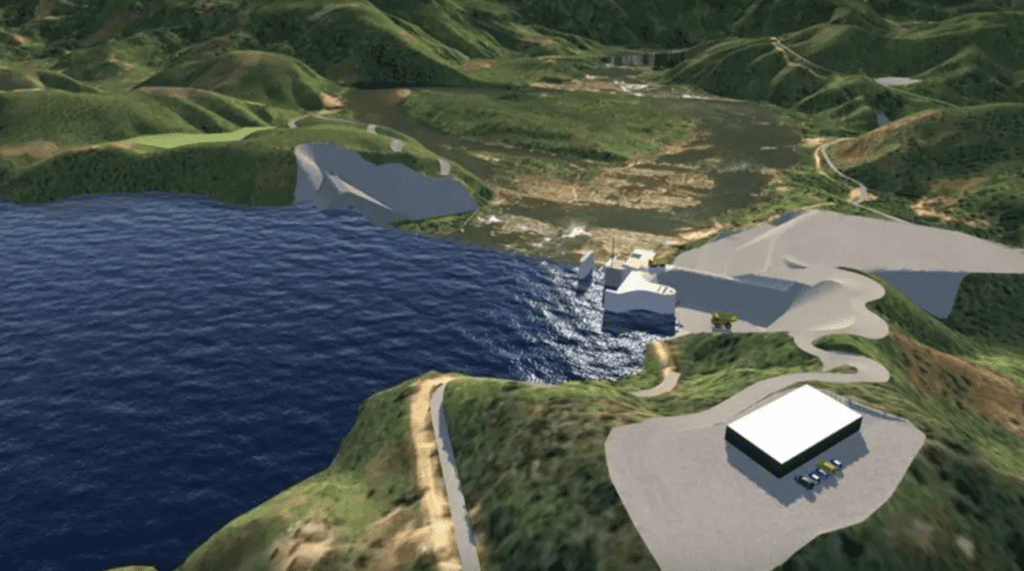Madagascar Ready to Ramp Up Hydropower Projects
Madagascar has significant hydropower potential, but to date less than 20% of the country’s energy comes from hydroelectric facilities. The Economic Development Agency of Madagascar (EDBM) estimates the island nation, located in the Indian Ocean off the cost of Southeast Africa, could produce as much as 7.8 GW of power from hydro resources, but at present is only utilizing about 2% of that potential.
Madagascar, with a population of nearly 30 million according to United Nations data, has installed power generation capacity of 969 MW; just 18% of that amount comes from hydropower stations. A report from the World Bank said Madagascar is one of the least-electrified countries on the African continent, as only about 33% of the island’s residents have access to power.
The country’s hydropower potential has made development of hydro resources a priority for the government, which has said it will support both small and large projects, in part because hydro is seen as the most cost-effective energy source for Madagascar. The country also wants to develop other renewable energy resources, including wind and solar, to replace generation from imported fossil fuels, including diesel.
New Partnership
A recent partnership agreement between Filatex, a group based in Tananarive, Madagascar, and Hyvity, a hydropower company headquartered in Paris, France, could begin to develop more of the island’s hydro resources. The groups recently said they want to work together to build several projects in a joint venture known as ENHY, in concert with local officials across Madagascar, including the Ministry of Energy and Hydrocarbons (MEH). The joint venture also is engaged with Jiro sy Rano Malagasy (JIRAMA), the island’s public power utility.
Hyvity announced the launch of ENHY in early February. The group in a news release said, “At the heart of the unavoidable challenges that the country must meet, is the production of local, renewable electricity capable of ensuring flexibility on its network. This is why the President of the Malagasy State, through the Plan for the Emergence of Madagascar (PEM), has given the Ministry of Energy and Hydrocarbons (MEH) the ambitious objective of developing the hydroelectric sector so that by 2030 it will represent 75% of an energy mix essentially composed of renewable energy.”

Hasnaine Yavarhoussen, director general of Filatex, said, “All the products we have are touching and impacting the development of the country.” Yavarhoussen said the group is committed to job creation across the island, and noted Filatex today is responsible for about 40% of Madagascar’s electricity output. “Better access to energy, and more green [energy], by focusing on renewables we’re able to develop projects in remote areas,” said George Conde, director of investments for Filatex. “The moment people have more access to electricity, you see how new jobs are created.”
ENHY Initiative
The ENHY initiative is beginning with two projects being studied in the Antsirabe region of the island that could add 20 MW of electricity output by 2026. Hyvity officials said the joint venture with Filatex is part of the aforementioned PEM, a government-backed program that has a goal of increasing hydropower’s share of the country’s energy mix. Other hydropower projects underway in the country include the 120-MW Volobe station (Figure 1) on the Ivondro River, being developed by partners including Africa50, Colas, Jovena, and SN Power. Those groups agreed to co-develop the project by acquiring equity in Compagnie Générale d’Hydroélectricité de Volobe, or CGHV, the company in charge of the station.
The largest hydro project currently underway on the island is the 205-MW Sahofika Hydroelectric Power Station, which spans the Onive River near the capital city of Antananarivo. The project, expected to enter operation in 2024, includes a nearly 200-foot-high dam, with a reservoir size of about three square miles. The station’s powerhouse features seven, 29.3-MW Pelton turbines.
—Darrell Proctor is a senior associate editor for POWER (@POWERmagazine).